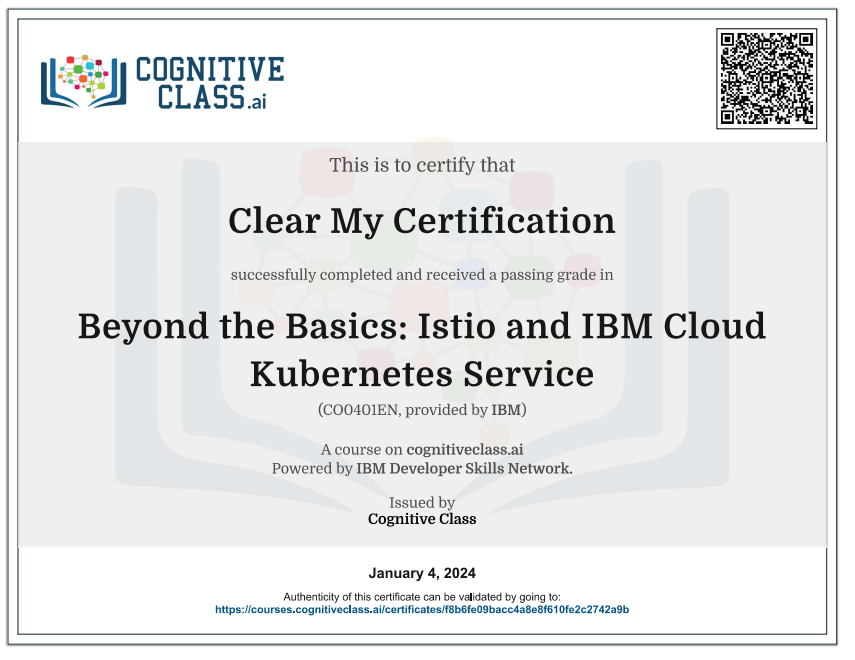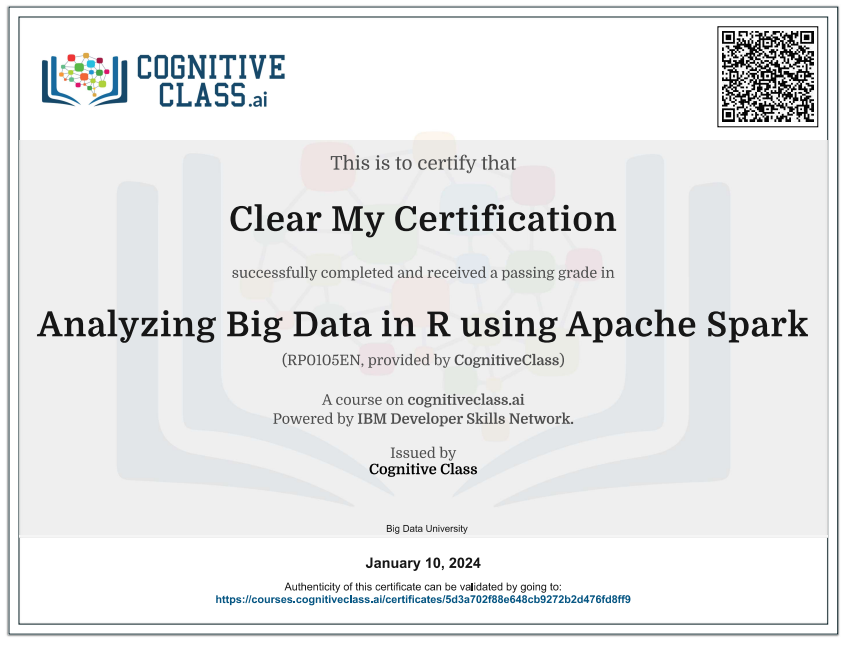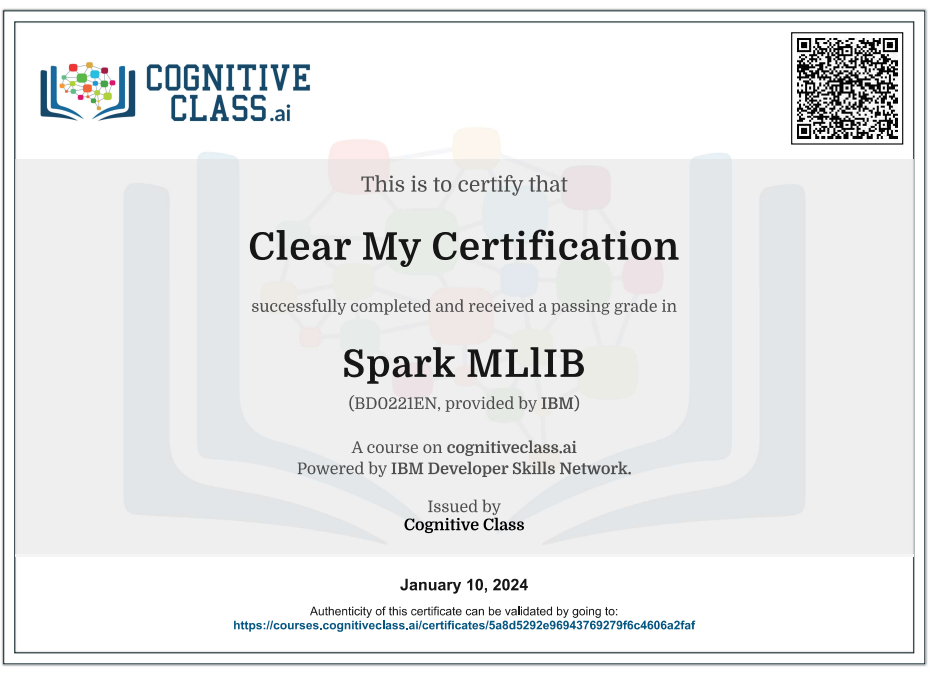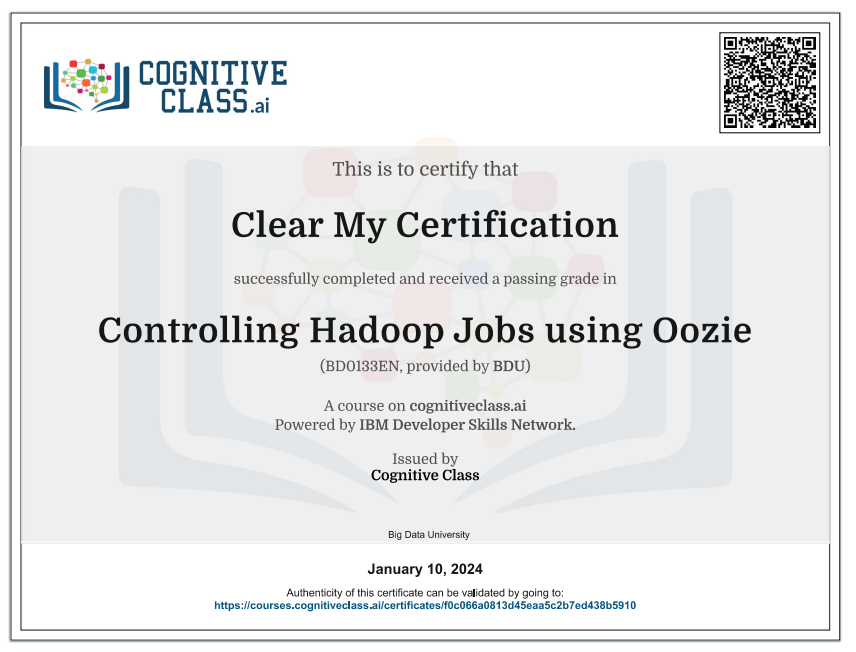Enroll Here: Beyond the Basics: Istio and IBM Cloud Kubernetes Service Cognitive Class Exam Quiz Answers
Beyond the Basics: Istio and IBM Cloud Kubernetes Service Cognitive Class Certification Answers

Lab 1 – Observe Service Telemetry Quiz Answers – Cognitive Class
Question 1: You must modify your apps to get metrics for those apps.
- True
- False
Question 2: You must modify your apps to get distributed tracing for those apps to work properly.
- True
- False
Question 3: What distributed tracing system does Istio support by default?
- Zipkin
- Kibana
- LogStash
- Jaeger
Question 4: In a SOA architecture that uses tradtional debugging techniques, as requests pass through multiple services, identifying performance bottlenecks becomes increasingly difficult.
- True
- False
Lab 2 – Expose the Service Mesh with Istio Ingress Controller Quiz Answers – Cognitive Class
Question 1: The components deployed on the service mesh by default are not exposed outside the cluster.
- True
- False
Question 2: In a Kubernetes environment, Istio uses what component to configure ingress behavior?
- Microservices Ingress controller
- Kubernetes Ingress Resources
- Cloud Ingress Resources
- Resource controller
Question 3: Ingress can provide load balancing, SSL termination, and name-based virtual hosting.
- True
- False
Question 4: What is an ingress?
- A collection of services
- A collection of pods
- A collection of rules
- A collection of clusters
Lab 3 – Manage Traffic Quiz Answers – Cognitive Class
Question 1: Where are routing rules defined?
- VirtualService
- VirtualRule
- DestinationRule
- ServiceEntry
Question 2: Where are service versions (subsets) defined?
- VirtualService
- DestinationRule
- ServiceEntry
- DestinationService
Question 3: Which Istio component is responsible for sending traffic management configurations to Istio sidecars?
- Mixer
- Citadel
- Pilot
- Kubernetes
Question 4: A ServiceEntry rule describes which of the following three items?
- Ports
- Traffic policies
- Endpoints
- Protocols
Lab 4 – Secure Your Service Quiz Answers – Cognitive Class
Question 1: Citadel provides each microservice with a strong, cryptographic identity in the form of a certificate. The certificate’s lifecycle is fully managed by Istio.
- True
- False
Question 2: Istio provides microservices with mutually authenticated connections without requiring app code changes.
- True
- False
Question 3: Mutual authentication must be on or off for the entire cluster; gradual adoption is not possible.
- True
- False
Question 4: Citadel is not directly responsible for which one of these items?
- Provides each service with an identity representing its role
- Provides connections to exchange and validate certificates
- Provides a common trust root to allow Envoys to validate and authenticate each other
- Provides a key management system, automating generation, distribution, and rotation of certificates and keys
Lab 5 – Enforce Policies for Microservices Quiz Answers – Cognitive Class
Question 1: Creating Mixer rules requires app code changes.
- True
- False
Question 2: What is the name of the custom code that interacts with the back-end system, such as Prometheus?
- Rule
- Instance
- Adapter
- Service
Question 3: Istio Mixer moves policy decisions under operator control rather than into configuration.
- True
- False
Question 4: Mixer is not responsible for interfacing with the back-end systems.
- True
- False
Beyond the Basics: Istio and IBM Cloud Kubernetes Service Final Exam Answers – Cognitive Class
Question 1: What is a service mesh?
- One or more containers
- A group of nodes
- A network of microservices
- A type of authentication system
Question 2: Which of these features is provided by Istio? Select all the apply.
- Traffic management
- Telemetry
- Policy enforcement
- Machine learning
- Mutual TLS
- App monetization
Question 3: Microservices that are deployed in Istio can communicate to services outside of Istio.
- True
- False
Question 4: Which Istio function normally requires users to modify their applications?
- Traffic management
- Metrics
- Distributed tracing
- Policy enforcement
Question 5: Which Istio component is always required even when you install only certain Istio features?
- Mixer
- Pilot
- Citadel
- Istioctl
Question 6: Which Istio component is part of the Istio service mesh data plane?
- Mixer
- Pilot
- Citadel
- Envoy sidecar
Question 7: Which Istio features allow you to configure per namespace?
- Policy enforcement
- Traffic management
- Authentication policy
- Telemetry
Question 8: To use Istio, a service must run in Kubernetes.
- True
- False
Question 9: What’s the purpose of a sidecar container in Kubernetes?
- It’s a container with Istio installed.
- It’s utility container in a pod.
- It helps to speed up the cluster run time.
- None of these
Question 10: What Istio component primarily manages telemetry?
- Pilot
- Istio Citadel
- Mixer
- Istio data plane
Question 11: What is an Envoy?
- A web server
- A sidecar proxy
- A pod
- None of these
Question 12: What component is primarily responsible for traffic management?
- Pilot
- Mixer
- Istio Citadel
- Security
Question 13: A VirtualService defines policies that apply to traffic intended for a service after routing has occurred.
- True
- False
Question 14: ServiceEntry configuration enables services within the mesh to access a service not necessarily managed by Istio.
- True
- False
Question 15: A/B testing is a method of performing identical tests against two separate service versions to determine which performs better.
- True
- False
Question 16: Telemetry in Istio can help you to pinpoint latency problems in microservices.
- True
- False
Question 17: What is the default sidecar proxy in istio?
- GINX
- Envoy
- HAProxy
- Pilot
Question 18: With what Istio component can you use to write custom adapters for tracing and metrics?
- Citadel
- Mixer
- Pilot
- Envoy
Question 19: Istio can secure the communication between microservices without requiring app code changes.
- True
- False
Question 20: In this course, what is an ingress?
- A collection of services
- A collection of rules that allow inbound connections to reach the cluster services
- A pathway to bypass disabled services
- None of these
Introduction to Beyond the Basics: Istio and IBM Cloud Kubernetes Service
Beyond the basics, integrating Istio with IBM Cloud Kubernetes Service (IKS) can enhance the capabilities of your Kubernetes-based applications by providing advanced features for traffic management, security, and observability. Istio is an open-source service mesh that facilitates communication, monitoring, and management of microservices in a Kubernetes environment. Here’s how you can leverage Istio with IBM Cloud Kubernetes Service:
1. Install Istio on IBM Cloud Kubernetes Service:
- Deploying Istio on IKS involves installing the Istio control plane, which includes components like Pilot, Mixer, and Ingress Gateway. Follow the Istio documentation to install Istio on your IBM Cloud Kubernetes cluster.
2. Traffic Management:
- Leverage Istio’s traffic management features for controlling the flow of traffic between microservices.
- Traffic Routing: Implement canary releases, A/B testing, and blue-green deployments.
- Load Balancing: Use Istio to distribute traffic across multiple instances of a service.
- Fault Injection: Introduce faults to test the resilience of your services.
3. Security:
- Enhance security in your microservices architecture using Istio’s security features.
- mTLS (Mutual TLS): Enable mTLS to secure communication between services within the mesh.
- Authorization Policies: Define fine-grained access control policies for your microservices.
- Policy Enforcement: Apply security policies consistently across services.
4. Observability:
- Gain deep insights into your microservices by leveraging Istio’s observability features.
- Distributed Tracing: Trace requests as they traverse through your microservices.
- Metrics and Monitoring: Collect and visualize metrics for your services.
- Logging: Capture and analyze logs for troubleshooting and monitoring.
5. Service Mesh Configuration:
- Configure Istio to match your specific application requirements.
- Custom Routing Rules: Define custom routing rules based on HTTP headers, paths, or other attributes.
- Timeouts and Retries: Set timeout and retry policies for resilient communication.
- Circuit Breakers: Implement circuit breakers to prevent cascading failures.
6. Integration with IBM Cloud Services:
- Integrate Istio with other IBM Cloud services to enhance your application’s capabilities.
- IBM Cloud Monitoring and Analytics: Integrate Istio with monitoring and analytics services on IBM Cloud.
- IBM Cloud Security Services: Extend security features with additional services provided by IBM Cloud.
7. Continuous Delivery and Deployment:
- Combine Istio with continuous delivery and deployment practices to automate the release process.
- Automated Canary Deployments: Implement automated canary releases with Istio.
- Continuous Deployment Pipelines: Integrate Istio into your CI/CD pipelines.
8. Scalability and Performance:
- Optimize your microservices for scalability and performance using Istio.
- Load Balancing Strategies: Explore different load balancing strategies provided by Istio.
- Performance Monitoring: Use Istio metrics to monitor and optimize performance.
9. Documentation and Community Resources:
- Stay informed and leverage the resources provided by the Istio community and IBM Cloud.
- Istio Documentation: Refer to the official Istio documentation for in-depth guides and references.
- IBM Cloud Kubernetes Service Documentation: Explore specific guidelines and best practices for using Istio on IBM Cloud Kubernetes Service.
By integrating Istio with IBM Cloud Kubernetes Service and exploring its advanced features, you can enhance the resilience, security, and observability of your microservices-based applications. It’s recommended to follow the official documentation for both Istio and IBM Cloud Kubernetes Service to ensure proper configuration and compatibility.
 Clear My Certification All Certification Exam Answers
Clear My Certification All Certification Exam Answers



